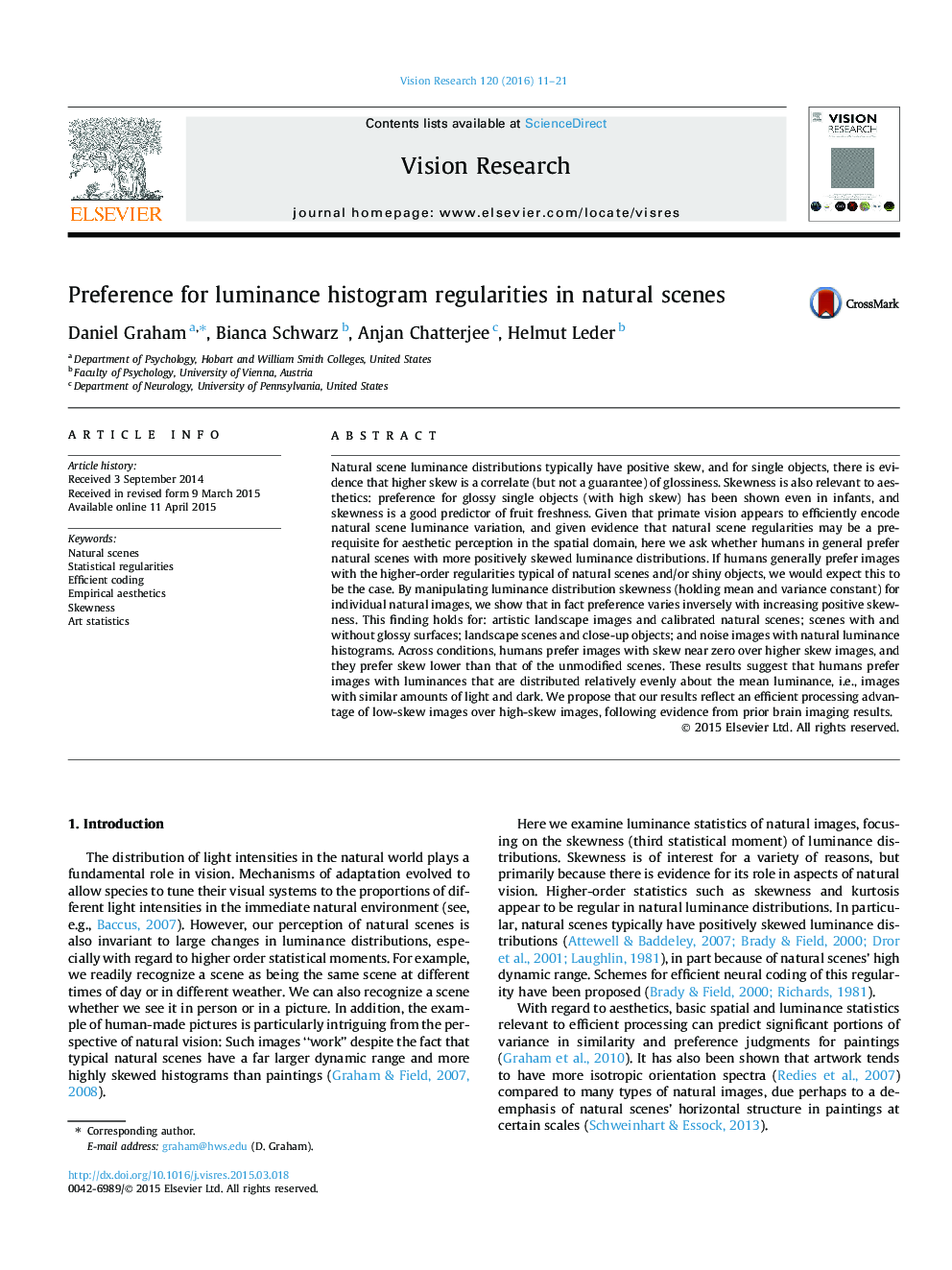| کد مقاله | کد نشریه | سال انتشار | مقاله انگلیسی | نسخه تمام متن |
|---|---|---|---|---|
| 6202958 | 1603179 | 2016 | 11 صفحه PDF | دانلود رایگان |
- Humans prefer images with low pixel intensity skewness when mean/variance held constant.
- Preference is for a balance of light and dark, in accord with studies of art statistics.
- May be explained in terms of efficient processing of intensity in cortex.
Natural scene luminance distributions typically have positive skew, and for single objects, there is evidence that higher skew is a correlate (but not a guarantee) of glossiness. Skewness is also relevant to aesthetics: preference for glossy single objects (with high skew) has been shown even in infants, and skewness is a good predictor of fruit freshness. Given that primate vision appears to efficiently encode natural scene luminance variation, and given evidence that natural scene regularities may be a prerequisite for aesthetic perception in the spatial domain, here we ask whether humans in general prefer natural scenes with more positively skewed luminance distributions. If humans generally prefer images with the higher-order regularities typical of natural scenes and/or shiny objects, we would expect this to be the case. By manipulating luminance distribution skewness (holding mean and variance constant) for individual natural images, we show that in fact preference varies inversely with increasing positive skewness. This finding holds for: artistic landscape images and calibrated natural scenes; scenes with and without glossy surfaces; landscape scenes and close-up objects; and noise images with natural luminance histograms. Across conditions, humans prefer images with skew near zero over higher skew images, and they prefer skew lower than that of the unmodified scenes. These results suggest that humans prefer images with luminances that are distributed relatively evenly about the mean luminance, i.e., images with similar amounts of light and dark. We propose that our results reflect an efficient processing advantage of low-skew images over high-skew images, following evidence from prior brain imaging results.
Journal: Vision Research - Volume 120, March 2016, Pages 11-21
